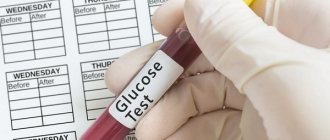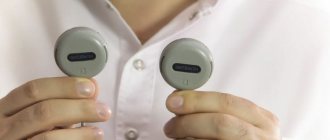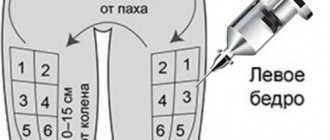07/04/2018 Intramuscular injection is a simple and popular method of introducing medications into the human body. However, if this procedure is carried out carelessly, complications may arise, which can be avoided if you master the correct technique for performing it.
Knowledge of the intramuscular injection procedure algorithm is needed not only by doctors. In the life of every person, a situation may arise when it is necessary to undergo a course of injections on your own. Before practicing intramuscular injections in practice, you need to carefully study the theory regarding this manipulation. Compliance with all standards will avoid complications.
Tips, notes, life hacks
If the injection is painful, inject the medicine slowly. It seems that the faster, the sooner a person will be exhausted, but in fact, a slow introduction is more comfortable. Average speed: 1 ml per 10 seconds.
Don’t be afraid to treat the ampoule, hands or skin with an antiseptic once again. Here it is better to overwork than to underwork.
If you need to change needles after drawing up medication, do not remove the cap from the new one until you install it on the syringe. Otherwise, you can inject yourself. For the same reason, never try to cap a needle if you have already removed it.
If you don't know how hard to stick a needle, at least practice on chicken fillet. Just to understand that it's not scary.
Stages of injections
The intramuscular injection procedure is divided into the following stages:
- Medical supplies are being prepared. You need: a sterile syringe, a drug in an ampoule, alcohol wipes for injections (or alcohol + cotton pads). The syringe must be checked for free passage of the needle by passing air through it using the movement of the piston. If the medication is not in a ready-made solution, but in a powder, then it must be diluted in the correct proportions with a special solvent.
- Asepsis of the ampoule and medicine set is carried out. The ampoule is disinfected with an alcohol wipe at the opening site, after which the solution is drawn into the syringe. You must try to ensure that the needle does not touch the walls of the ampoule.
- The injection site on the patient's body is selected. Afterwards it is treated with an alcohol-soaked napkin - in a circular motion outward from the center. This is a mandatory manipulation in order to prevent complications of intramuscular injections.
- The syringe is cleared of air. The syringe is lifted up by the needle and air is released from it. You need to press the plunger until a small drop of the drug appears from the needle.
- An injection is given. It is performed with a quick movement, at a right angle. The medicine should be administered gradually, pressing the syringe plunger with equal force.
- The syringe is removed. After administering the medicine, the needle is sharply removed at the same angle at which it was inserted, applying a napkin with alcohol to the injection site and lightly massaging the skin with it. This is just as important to do after the injection as before.
When to give an injection without specialists
- If the drug was not prescribed by a doctor. In general, there is no need to engage in self-medication, much less injections, even if for some reason you want to “inject some vitamins.” The drug, its dosage, how to dilute it - all this is determined by the doctor, and only he.
- If the patient has never taken this drug before. Many medications have side effects and can cause unwanted reactions. Medicines that are administered through injections enter the blood faster, so reactions to them appear quickly and strongly. Therefore, it is better to do the first injection in a medical facility and not rush to run away from there, but wait 5-10 minutes so that everything is in order. If something goes wrong, the clinic will help, but at home you may not be able to cope.
- When you have the opportunity to use the services of doctors, but don’t want to. An intramuscular injection is short-lived and inexpensive, but doing it at home can end badly, so you won’t be able to save either money or time.
- When the person who needs the shot has HIV, hepatitis or other blood-borne infections, or if it is not known whether the person has these infections (no valid certificate). In this case, it is better to entrust the matter to specialists in order to eliminate the risk of infection: doctors have more experience, and they will then dispose of the instruments properly.
- If you are very scared and your hands are shaking so much that you do not hit the patient.
Injection sites
The best places for intramuscular injections are the upper part of the buttock, the vastus femoris muscle and the deltoid muscle of the shoulder. When performing an injection into the buttock, it must be visually divided into 4 quadrants. The injection is made in the upper outer quadrant - this is the safest area without large nerves and blood vessels. In the case of the hip, its anterior surface is also divided into 4 quadrants. Inject into the outer outer quadrant.
The correct place for an injection in the shoulder can be found like this: mentally divide the arm from the elbow to the shoulder joint into 3 equal sections. The center of the middle area will be the most suitable location. However, it is more difficult to give an injection in the shoulder without assistance than in the thigh or buttock.
- Advice
: if IM injections are prescribed as a course and not as a single procedure, choose a different place each time, and also try not to hit the points of previous injections, so as not to provoke inflammation and compaction. - Important
: before performing an injection into any muscle, it must be relaxed as much as possible to prevent the needle from breaking in the process.
What injections can you give yourself?
You can only administer drugs intravenously or subcutaneously. It is strictly not recommended to do intravenous injections on your own - this requires special education and skills. Any mistakes in such cases can lead to serious complications and sometimes death, so it is better to order a nurse to visit your home.
You should not inject yourself when you suffer from serious allergic reactions (especially if you have not previously used the drug). Quincke's edema and anaphylactic shock, which can develop with the introduction of new drugs, are dangerous conditions that require immediate medical attention. In addition, vaccines cannot be administered at home - vaccinations are given only in a medical facility, since the procedure requires compliance with conditions.
Preparing for intramuscular injection
The results of the procedure depend on a number of simple manipulations:
- Inspect the ampoule with the medicine for its integrity, and also check the expiration date of the drug.
- Collect all the medicine at the bottom of the ampoule. To do this, you will need to lightly shake the ampoule 1-2 times.
- Use a special file (supplied with the preparation) to file the upper part of the glass flask. Usually the incision site is marked with a colored rim.
- Break off the sawn tip of the ampoule. For safety, it is better to place the cone in a napkin so as not to get hurt when opening the glass vial.
- Release the syringe needle from the protective cap and immerse it in the medicinal liquid. Pull the handle of the instrument towards you and draw out the medicine.
When the syringe is filled with liquid, you need to tap it a little with your finger. This will help to collect all the air bubbles and, by gently pressing the piston, bring them out. After this, you can give the injection.
If the main medicinal substance is in powder form, it is diluted in a special solution (indicated in the instructions).
This is done as follows:
- remove the protective metal cap from the bottle;
- using a needle and syringe, inject the required amount of solution into the vial of powder;
- shake thoroughly;
- turn the bottle over, pierce the cap and collect the medicine in the syringe.
When the lid is pierced, the needle becomes dull. To make the injection less painful and to maintain sterility, it is better to replace the needle with a new one before injection.
How to choose a syringe and needle for an injection in the buttock
The main thing you need to know when choosing a syringe for injection is that the volume of the instrument should not exceed the amount of the drug administered:
- for children – 2 ml;
- for adults – 5 ml (very rarely 10 ml).
Injections with a volume of more than 10 ml are not given into muscle tissue. A large amount of medicine is not able to quickly dissolve and spread throughout the body. This condition can lead to purulent abscesses.
To prevent the injection of the drug from being too deep, the most suitable needle length is considered to be 4–6 cm. This will also help not to catch the walls of capillaries and nerve endings,
How to do it right
To give yourself an injection, you need to take the most comfortable position. Intramuscular injections into the thigh are considered painful, so it is preferable to inject into the gluteal muscle. But if this is not possible, then you need to choose the right injection site in the thigh. To do this, sit on a hard chair with your knees bent. The part of the thigh that is not above the femur, but above the stool, is the most suitable site for administering the drug.
It is best to inject into the lateral muscle, in its middle third. If you have to inject yourself into an emaciated person, you must first gather the skin into a fold, like a Shar Pei. A needle will need to be inserted into the collected skin, this will allow the medication to be injected directly into the muscle. The same technique for administering the drug must be followed if injecting a thin child.
It is forbidden to make intramuscular injections into the thigh of the leg if the intended injection site is inflamed or damaged. In such a situation, you need to choose a different site for administering the medicine.
When carrying out this medical procedure, it is important to follow these rules:
- The injection sites of the drug should be changed, it is better to give injections in different legs;
- reusing syringes and needles is strictly prohibited;
- Before administering the drug, all air bubbles should be released from the syringe.
It is important to relax the muscle as much as possible before inserting the needle; failure to comply with this recommendation will cause severe pain.
To myself
Many people find it easier to inject themselves than to go to the hospital or look for a person who knows how to give intramuscular injections.
Before injecting yourself with medicine for the first time, you should familiarize yourself with the technique; it is easier to inject yourself into the leg than into the gluteal muscle. What do you think are the most important factors when choosing a medical facility?
The drug is administered at home as follows. To give yourself an intramuscular injection, the patient must:
- draw the medicine into the syringe;
- sit on a chair, relax the thigh muscle as much as possible for the injection;
- wipe the intended injection site with an antiseptic;
- insert the needle into the muscle with a sharp movement (for people of average build, to get into the muscle tissue, it is enough to insert it 2/3 of the length);
- press the syringe plunger so that the medicine completely enters the muscle;
- remove the syringe and needle from the leg;
- Apply a cotton ball or disk soaked in antiseptic to the injection site.
The area where the drug was injected can be lightly massaged. This speeds up the process of resorption of the medicine, prevents the formation of compactions and hematomas.
Is it possible to inject yourself?
According to doctors, it is better to entrust injections to professionals. But if it is not possible to regularly go to the hospital or call a nurse at home, then you can learn how to give injections yourself.
Patients have the right to give themselves intramuscular and subcutaneous injections. But it’s better to first see how to give the injection correctly. When performing the procedure independently, the patient can relax as much as possible and choose the most comfortable position.
You can reduce pain if you pre-treat the skin with a gel that contains lidocaine.
Every adult has the right to start giving themselves injections; intramuscular injections in the thigh are the most acceptable option. Although some people prefer to inject the drug into their buttocks. You can do this by standing half-turned in front of a mirror.
The need to self-administer medications is most often encountered by people who have to inject drugs (most often insulin) rather than intramuscular injections. In such a situation, doctors tell and show how to properly give a subcutaneous injection yourself, and explain how to avoid complications.
To another person
It is easier to inject another person's leg than it is to inject yourself. If possible, it is better to inject the patient in the gluteal muscle, but if necessary, give an injection in the thigh. To do this, the patient should be placed on his back and asked to relax. The needle must be inserted into the middle third of the anterior thigh.
The manipulation technique does not differ from the one that is recommended to be followed when administering drugs to oneself. If it is necessary to make an intramuscular injection, then the needle must be inserted perpendicular to the skin. When performing subcutaneous injections, the needle is inserted into the skin fold at an angle of 45°.
Possible complications
Improper execution of an intramuscular injection can cause various complications: from minor to painful. Therefore, it is better to familiarize yourself with possible ones even before they appear:
- Hematoma
. Forms when the needle touches a blood vessel or when the drug is injected too quickly. Prevention of minor hemorrhages is to use sufficiently sharp needles for injections and adherence to the correct technique. If a hematoma has already formed, you need to apply an alcohol compress to it. To speed up the resorption of hematomas, you need to apply ointments specially designed for this. - Infiltrate
. A sign of infiltration is thickening and pain at the injection site. They occur due to multiple injections in the same place and due to incorrect technique for administering the medicine. In order not to provoke the occurrence of infiltration, it is necessary to carefully select injection sites, change them, control the temperature of the injected drugs and carry out all manipulations correctly. If infiltration occurs, it is recommended to apply a warm compress to it. The iodine mesh also speeds up the resorption of seals. - Needle breakage
. This can happen due to severe tension in the muscles during the injection process, due to poor quality of the needle, and also due to the insertion of the needle all the way to the cannula. To avoid breaking the needle, it must be inserted to a depth of no more than 2/3 of its length. The patient must lie down during the procedure. If the needle breaks, you need to use tweezers to pull it out. If the fragment gets too deep under the skin, you need to see a doctor to have it surgically removed. - Abscess
. If you do not follow the rules of disinfection, an abscess may develop - purulent inflammation. Signs include redness of the skin, pain, and increased general temperature. To prevent an abscess, it is necessary to follow the rules of asepsis. If a complication has already occurred, surgical intervention is prescribed.
If you cannot get rid of a post-injection complication on your own, be sure to see a medical professional.
We wish that the necessary injections are always easy and painless for you.
Intradermal
Introducing drugs into the skin is not so simple technically and requires some skill. A thin needle should penetrate only under the upper stratum corneum, but not into the subcutaneous fat. A sign that the injection has been performed correctly is a light-colored bump with the drug that appears on the skin after injection. After some time it resolves.
Intradermal administration of drugs is most often used in cosmetology to normalize the condition of the skin, as well as when testing for allergens and specific immune reactions (Mantoux test, Schick reaction, etc.). Some types of local anesthesia are also administered this way. As a rule, they are done on the outer surface of the shoulder and forearm. It is prohibited for non-specialists (people without medical training) to perform such injections.









